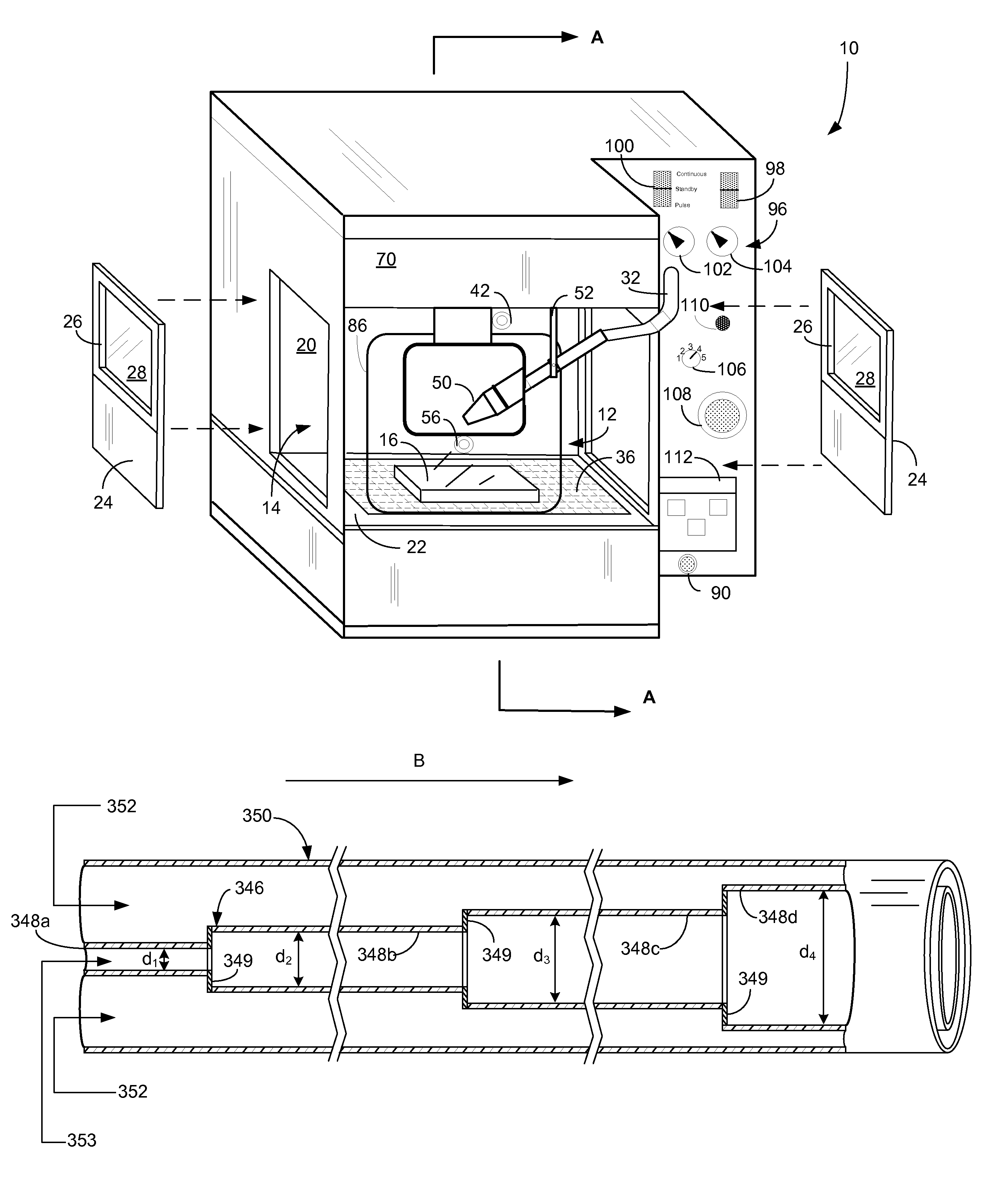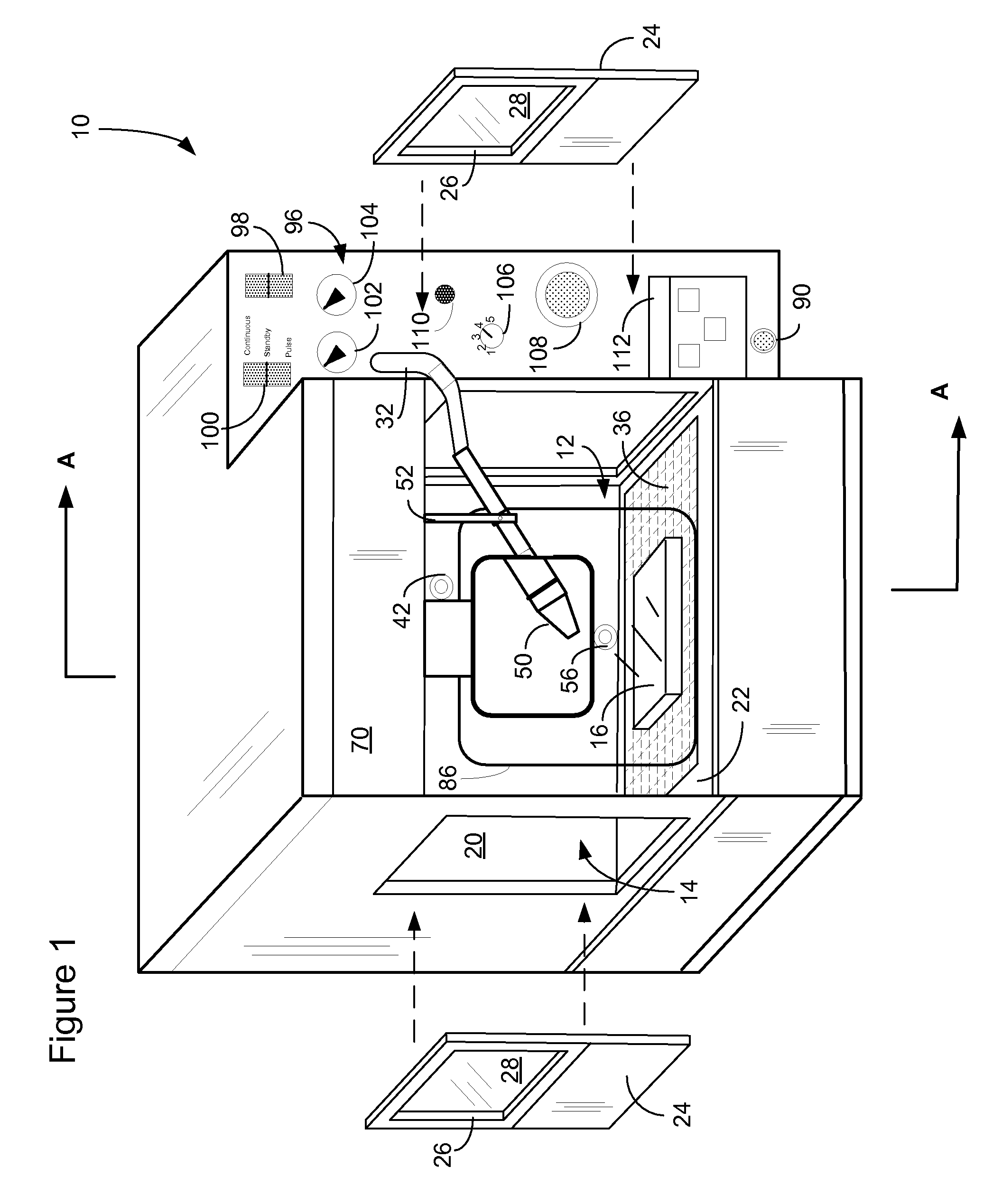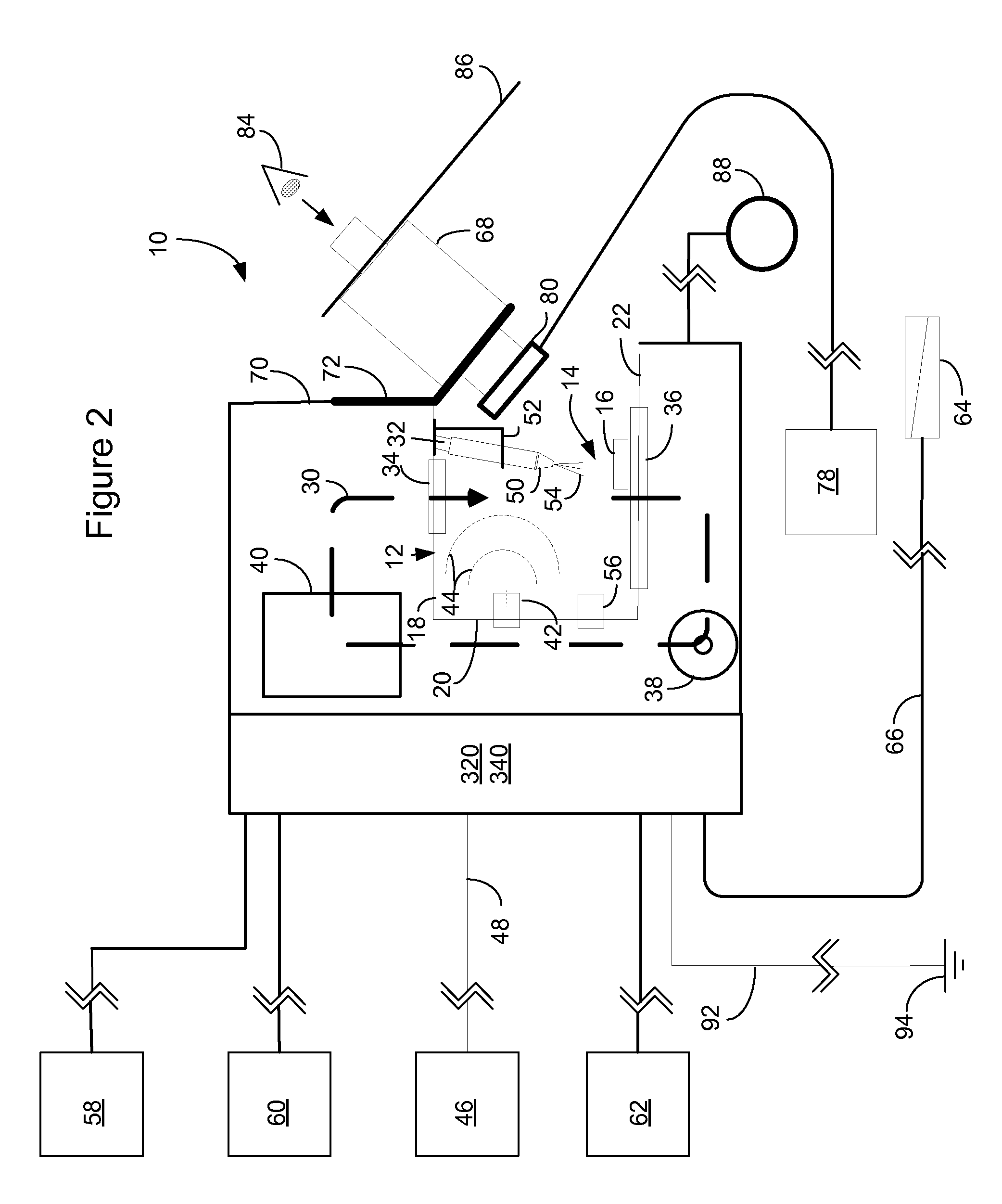Apparatus to treat and inspect a substrate
a technology for treating and inspecting substrates, applied in the field of environmental control, can solve the problems of attracting atmospheric contaminants to the treated substrates, condense or “rain out” of contaminants contained therein, and potential device damage, so as to reduce clogging and sputtering, prevent contamination of the substrate, and increase the effect of joule-thompson cooling
- Summary
- Abstract
- Description
- Claims
- Application Information
AI Technical Summary
Benefits of technology
Problems solved by technology
Method used
Image
Examples
Embodiment Construction
[0019]An apparatus to selectively treat and inspect a substrate is generally indicated 10 in FIGS. 1 and 2. The apparatus 10 includes a protective enclosure 12 which defines a mini-environment or cavity 14 for providing an instantaneous curtain or sheath of re-circulated and controlled atmosphere when treating or inspecting substrates 16 positioned therein. The protective enclosure 12 includes a ceiling, 18 walls 20, base 22 and removable electrostatic-discharge dissipative side panels 24, all of which provide a partial enclosure about the substrate 16 during processing and thus forming the cavity 14 therein. Each side panel 24 includes an upper aperture 26 containing a pane of transparent material 28 to allow further lighting within the cavity 14. The protective enclosure 12 is designed to have a portion open to the ambient atmosphere for insertion of the substrate 16 to be treated. The enclosure 12 may be constructed of any variety of materials including, but no limited to, metals...
PUM
 Login to View More
Login to View More Abstract
Description
Claims
Application Information
 Login to View More
Login to View More - R&D
- Intellectual Property
- Life Sciences
- Materials
- Tech Scout
- Unparalleled Data Quality
- Higher Quality Content
- 60% Fewer Hallucinations
Browse by: Latest US Patents, China's latest patents, Technical Efficacy Thesaurus, Application Domain, Technology Topic, Popular Technical Reports.
© 2025 PatSnap. All rights reserved.Legal|Privacy policy|Modern Slavery Act Transparency Statement|Sitemap|About US| Contact US: help@patsnap.com



